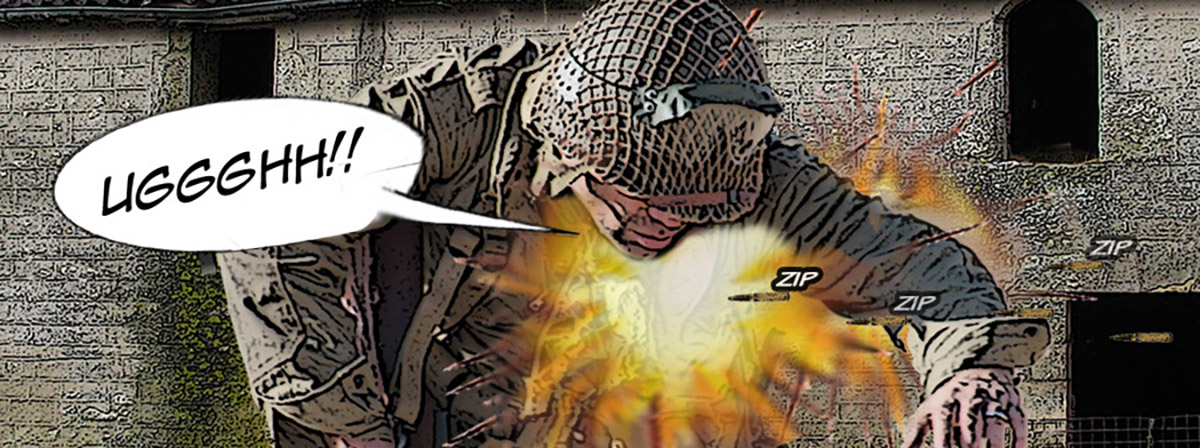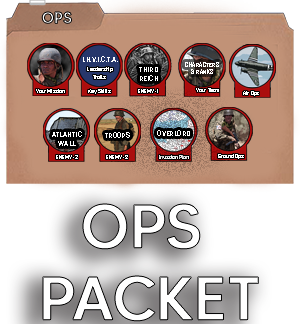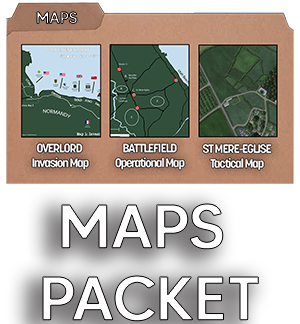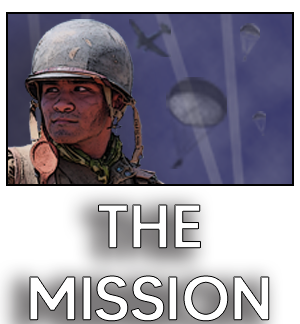TAKE BATTALION TO ST. MERE-EGLISE

"Well," thinks Vandervoort, "if they tell me to bring my battalion to St. Mere-Eglise, that's what I should do."
He leads the battalion back to St. Mere-Eglise, a fast trip, straight down Route 13. The haze lifts and they see no Germans on their way.
Just before they reach the town, the paratroopers hear rattling small arms fire. Smoke drifts over battered, flaming buildings. Several parachutes scatter the trees or drape over buildings.
"Sir, we've linked up with 3/505th!" one of the scouts reports.
Vandervoort confers with the senior officer from his brother battalion. These Americans seized St. Mere-Eglise hours ago and have held off German attacks all morning.
"A large German force will hit us sometime soon from the southwest."
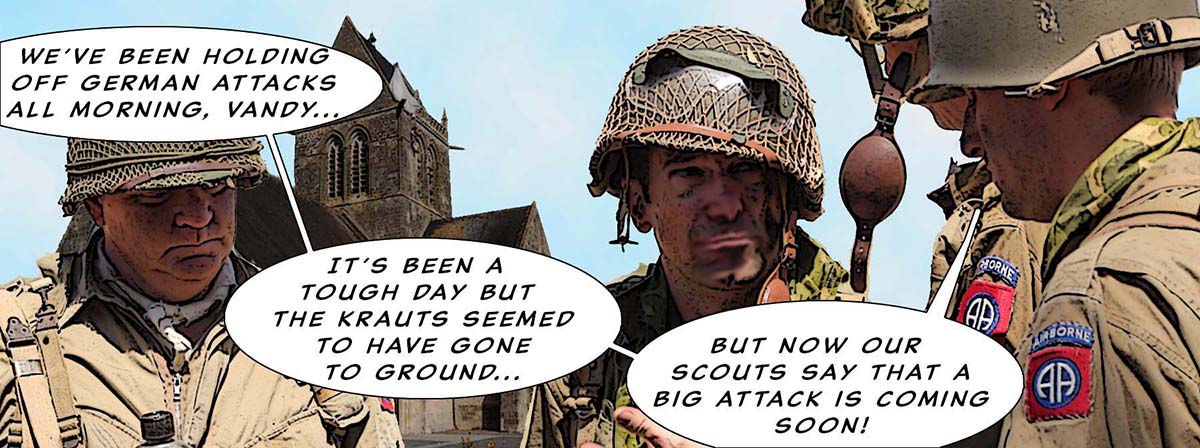
The two battalions split the defense and the leaders move men into position. Tough fighting follows but the combined force decisively defeat the Germans.
An attack from the north, though, totally surprises the Americans. A German regiment, backed up by an old but effective French tank, crashes down from Neuville-Au-Plain. The men on the north side of town flee and the Germans soon seize the town.
Turner sees Vandervoort cut down by German fire. The surviving paratroopers scatter among the hedgerows but few escape.
German Tiger tanks next pass quickly through the town to meet the Americans landing at Utah Beach. They do a lot of damage to the landings at what becomes known as "Bloody Utah".
Hearing about the fierce fighting at both Utah and Omaha beaches, General Eisenhower cancels the rest of the Normandy landings late in the afternoon on June 6, 1944. D-Day is a failure.
